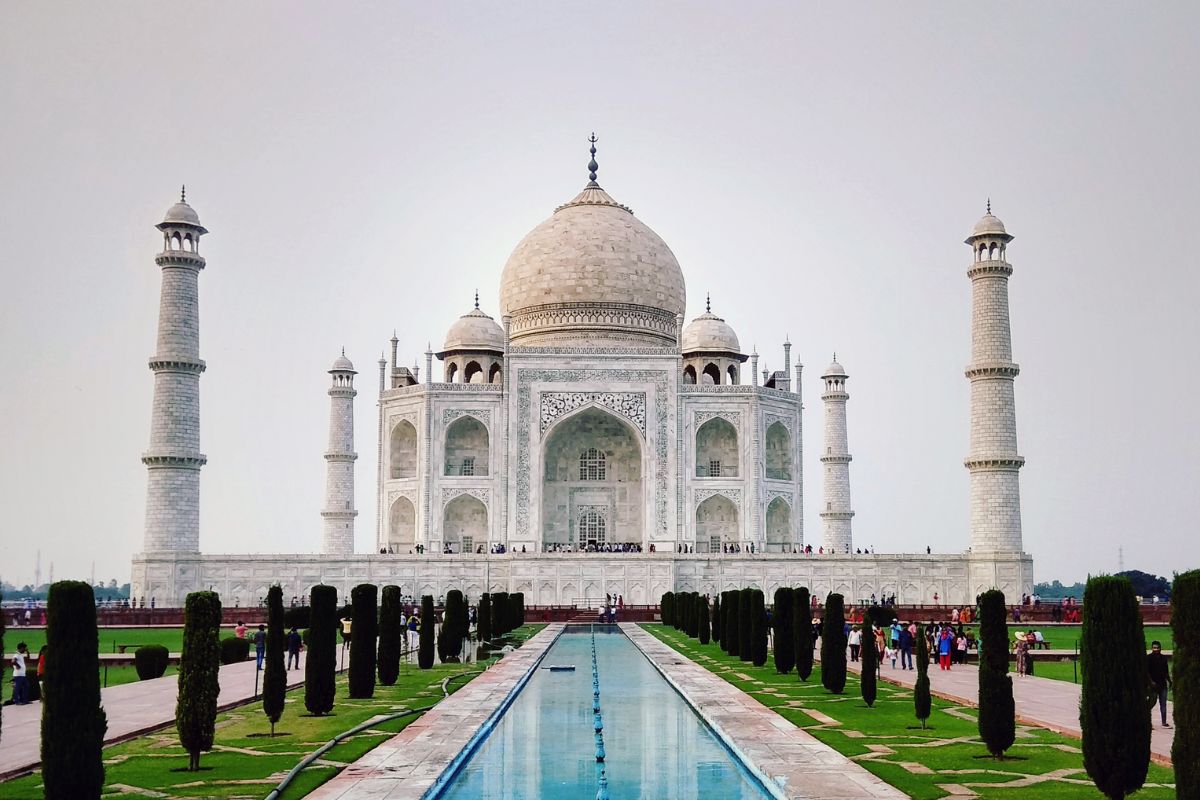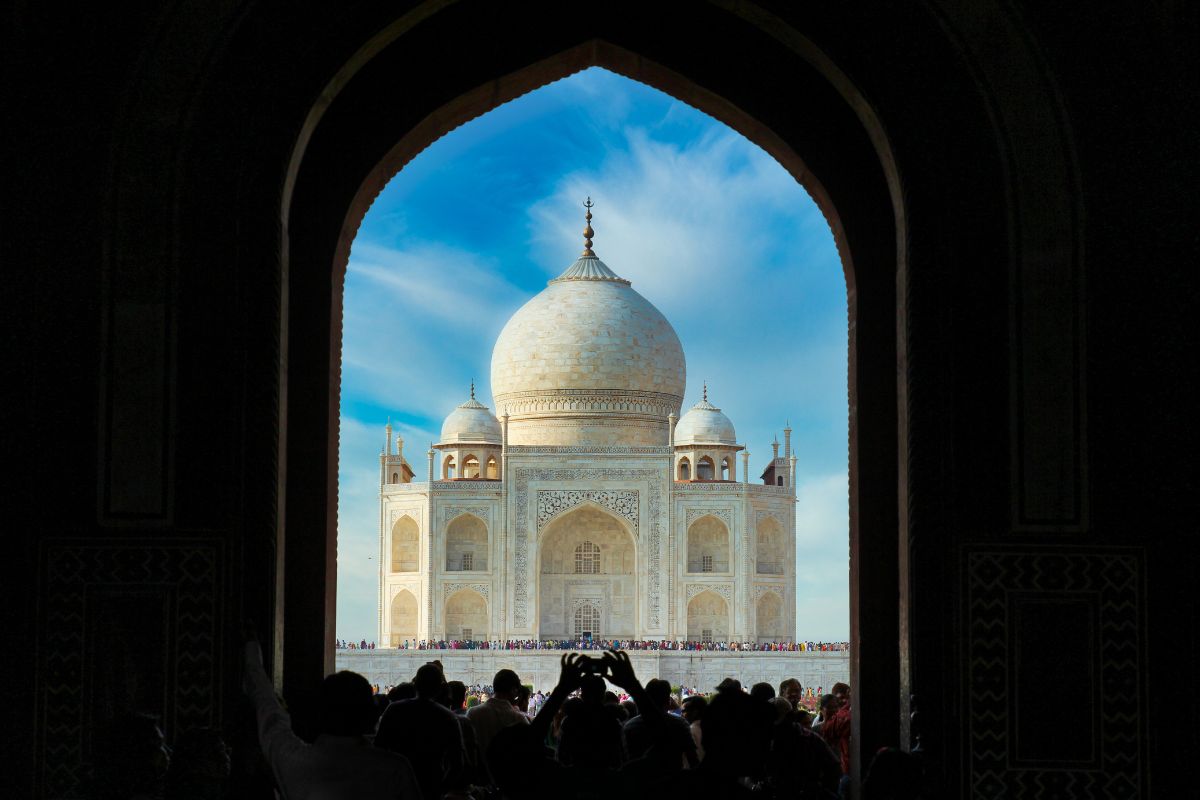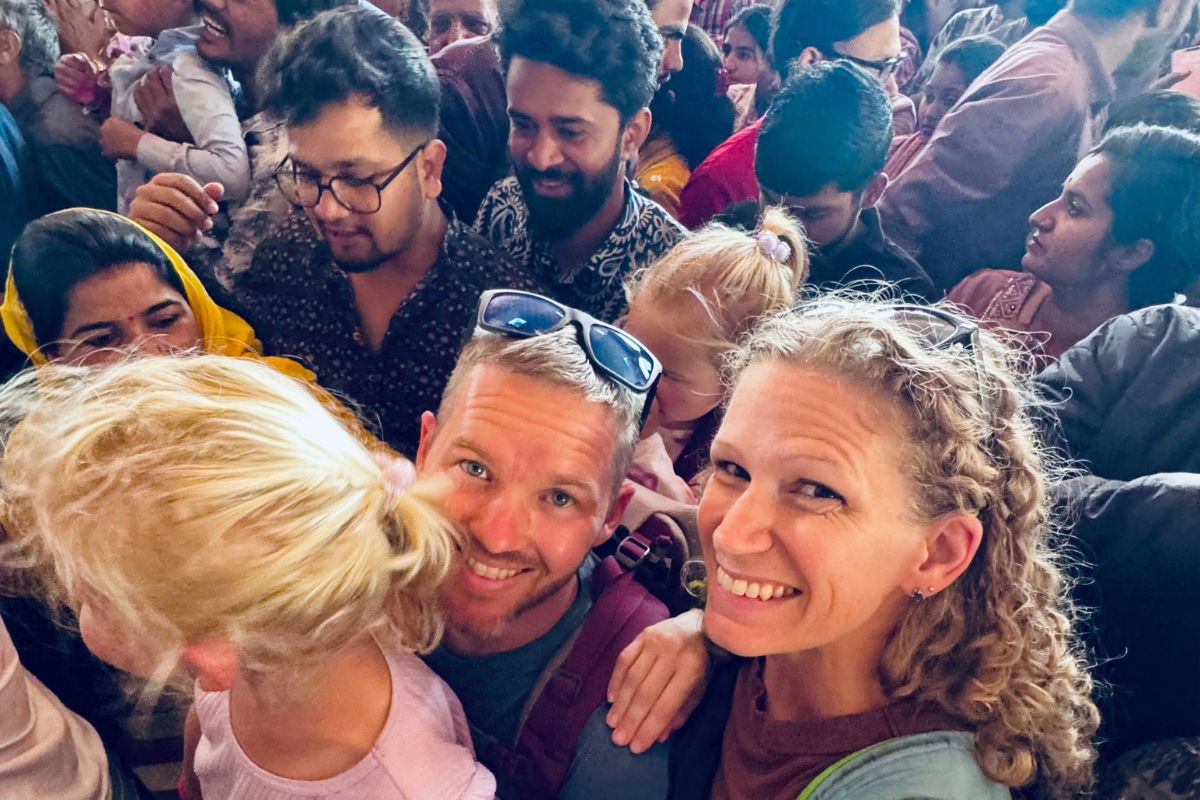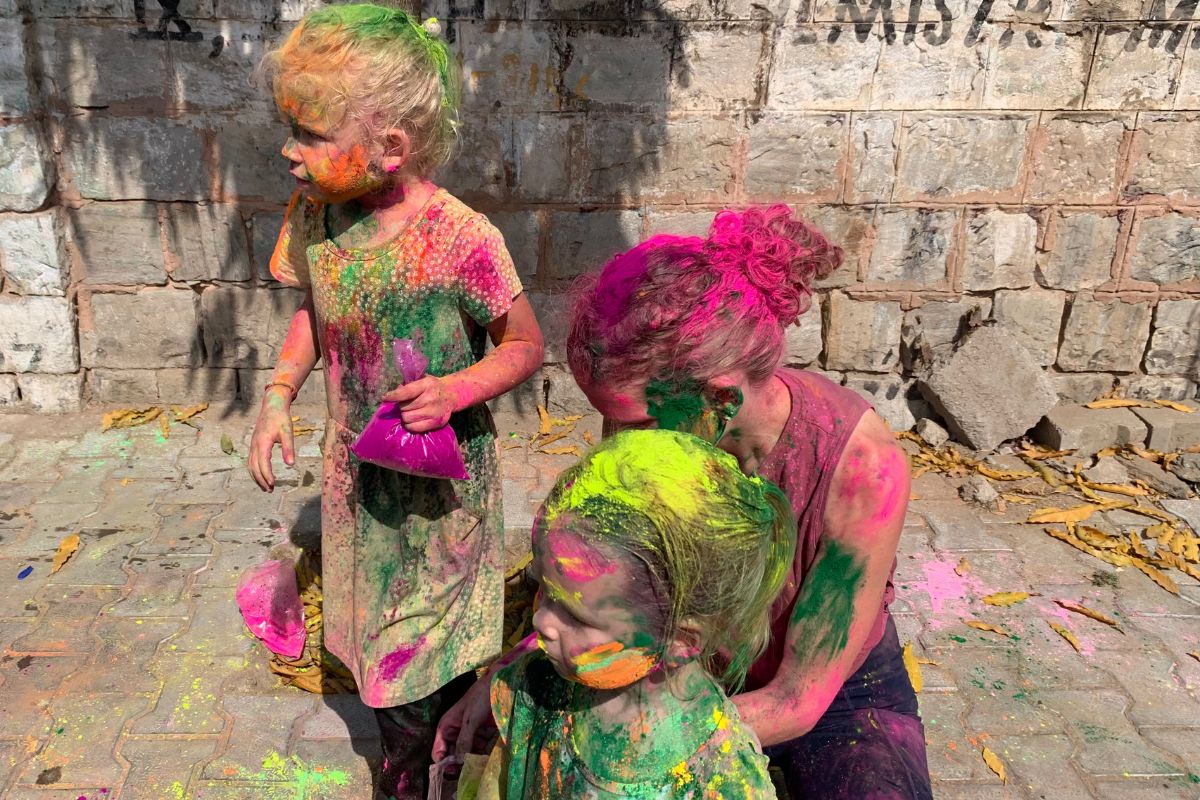Visiting one of the Seven Wonders of the World sounds epic, right? Now throw two kids into the mix, a 3 AM train, and the unpredictability of India—and you’ve got yourself a story. We recently decided to visit the Taj Mahal with our kids, and while it wasn’t perfect, it was completely worth it.
If you’re wondering whether it’s really a good idea to bring your little ones to such an iconic spot, I’ve got answers based on our real experience—no sugarcoating, no fluff, just the good, the messy, and the magical.
Why Visit the Taj Mahal With Kids at All?
We didn’t fly across the world just for the Taj Mahal—we were already traveling through India. But when we found ourselves in Delhi, it felt like the kind of cultural experience we couldn’t pass up.
Yes, our toddler got sick the first day we tried to go. Yes, we struggled with the trains. And no, we didn’t wait until the “perfect” time when the kids would “remember it better.” Why? Because perfect is a myth.
We just wanted them to see it. To stand in front of it, feel its presence, and take it in however they wanted—whether that was awe, boredom, or dancing in the garden.
Not every experience has to be educational. Sometimes, it’s enough just to be there.
Taj MahalIs the Taj Mahal Kid-Friendly? What to Actually Expect
Honestly? It’s more kid-friendly than you’d think.
We always use a child carrier—it’s our go-to for any unknown terrain. But if you’re a stroller family, here’s the deal: technically, the Taj grounds are open and flat, but we didn’t see anyone with a stroller. Likely because parts of the route involve stairs (like entering the mausoleum), and there are restrictions on what you can bring in. I wouldn’t risk it.
The walking itself was manageable for both our kids (ages 2 and 5). There were plenty of benches along the way for breaks, and open spaces where they could stretch their legs. While there weren’t any diaper-changing stations that I could see—and we didn’t need one—you’ll want to plan ahead if you’ve got a little one in diapers. This is a conservative area, so open-air changes probably wouldn’t go over well.
When’s the Best Time of Day to Visit With Kids?
Let’s be honest—if you’re chasing that magical early morning light and want to see the Taj Mahal without big crowds, sunrise is definitely the dream. The gates open about 30 minutes before sunrise, and that first hour of the day is peaceful, cooler, and absolutely stunning. I get why people go for it.
But we didn’t make it for sunrise, and I want to be real with you—that was totally okay.
We had a 3 AM wake-up to catch a train from Jaipur, which sounded doable the night before but felt a little crazy in the moment. We ended up arriving sometime after sunrise, and while we missed that golden hour light, the experience was still amazing. The crowds were manageable, our kids weren’t overstimulated, and we could walk around at our own pace. No chaos, no overwhelm.
If you’re staying in Agra or Delhi, and you’re able to wake up early and get to the gates before sunrise, it’s probably worth it just to beat the rush and enjoy the cooler air. But don’t stress if your family’s rhythm doesn’t allow for that—especially with toddlers or preschoolers who don’t function well at 4 AM (can anyone, really?).
Also, by the time we got there, we saw people already leaving—which tells me some folks get in and out super early and don’t spend much time. So even if you show up at 8 or 9 AM, the grounds are so vast that it still feels calm and open. That was our experience.
Just a heads-up: the Taj Mahal closes 30 minutes before sunset, so there’s no nighttime viewing unless it’s during a rare full moon tour (which has special hours and a separate ticket). And Fridays? Closed entirely for prayers. So plan accordingly.
For most families, morning is ideal, whether that’s sunrise or shortly after. You avoid the midday heat, have energy to walk around, and your kids are (hopefully) in a good mood. Plus, you’ll still catch some of that dreamy light as it reflects off the white marble. Total win.
Final takeaway: if you can make sunrise work—go for it. But if not, don’t let that stop you. There’s no wrong time to visit something this spectacular.
What to Pack (and What NOT to Bring)
Taj Mahal security is tight. Think metal detectors, bag checks, and pat-downs. You’ll want to travel light. We were only allowed to bring in a small pack with water bottles and sunglasses.
Leave the big backpacks behind (they’ll make you store them before entering). We didn’t bring snacks, though I wish we had a small something just to tide the kids over.
No hats, no giant bags, no drones, and definitely no food that can be considered messy or disrespectful. If you’re unsure, assume it’s not allowed.
How We Got There (and How You Might Want to Do It Differently)
Let me tell you what not to do: take a pre-dawn train from Jaipur to Agra with two small kids. It was chaotic, exhausting, and… kind of hilarious in hindsight.
That said, it worked. We bought our tickets online in advance, including the add-on for mausoleum entry (worth it). Make sure to select the foreigner ticket if applicable—they check.
We skipped a guide. Not because we’re against them, but with kids, we prefer flexibility. Instead, we walked, explored, and later looked up facts on YouTube—learning on our own time, in a way that worked for us.
How We Prepped the Kids (Hint: We Kept It Simple)
We didn’t do a deep dive into Mughal history with our preschooler, but we did show them pictures of the Taj and talked about how it was a special place.
After the visit, we watched a few videos together that explained the story of Shah Jahan and Mumtaz Mahal, the symmetry of the building, and how the king was later imprisoned with only a view of his beloved’s tomb. It made for a great follow-up and helped them connect the dots.
Dealing With Crowds, Breaks, and Quiet Spaces
India is full of sensory overload, and Agra is no exception. But surprisingly, the Taj Mahal felt spacious. People gave us room, and there was no pushing or shoving. If you walk toward the right side of the complex, there’s a quieter area with benches—our kids chilled there for a while and got some much-needed space.
You’ll get stared at. Our kids, who look different from most locals, got plenty of attention. We set boundaries early on (“no touching, please”) and sunglasses helped them feel a little less on display.
Safety and Cultural Etiquette Tips
We felt completely safe the entire time. There are guards throughout, and security is well-managed. Just remember to follow basic etiquette:
- Dress modestly (knees and shoulders covered)
- Respect the no-shoes rule in sacred areas
- Keep voices low in the mausoleum
- Avoid public diaper changes
I couldn’t find an official dress code online, but long pants and a covered top will keep you comfortable and culturally appropriate.
The First Awe MomentThe Moments That Surprised Us Most
Seeing the Taj Mahal rise into view as we approached? Goosebumps.
Our kids walked the whole way with smiles on their faces, and they genuinely enjoyed the grandeur of it all. No meltdowns, no complaints. Just wide eyes and lots of “whoa, it’s so big!” moments.
Honestly, I expected it to feel hectic or overwhelming, but it was organized, peaceful, and surprisingly easy. The only thing I’d do differently? Maybe bring a hat next time.
Final Thoughts: Should Other Families Visit the Taj Mahal With Kids?
Yes. A million times yes.
It won’t be perfect, and it doesn’t have to be. It’s not about turning your visit into a textbook history lesson—it’s about exposing your kids to something incredible, even if they don’t fully grasp it yet.
Let them explore, let them be curious, and go at their pace. Don’t overthink it. Don’t wait for a perfect age or moment.
If you’re already in India, visit the Taj Mahal with your kids. Let it be a part of their story—chaos, wonder, tired feet and all.








